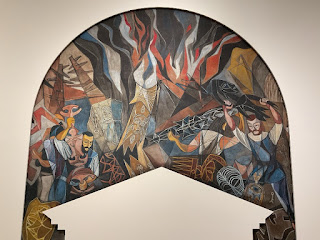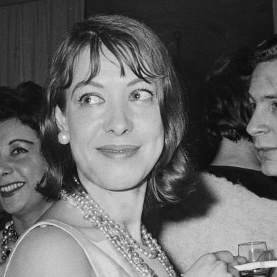A review of Gustave Caillebotte: Painting His World
at the Art Institute of Chicago
********
Caillebotte, Paris Street Rainy Day, 1887, 83 x 108
Been there, done that?
That must explain why mimetic painting is now so marginalized by the academic and investment grade artworld - despite its continued appeal and practice. If Caillebotte had been born a hundred years later, there is a better chance of finding a snowball in Hell than him having such a mammoth exhibit in Regenstein Hall. He wasn’t even an innovator back in his own lifetime. He just did what he did extremely well. And what he did was paint the world in which he was comfortable. That is also the mission of an outsider artist like Henry Darger - but unlike Darger, Caillebotte grew up wealthy, well educated, and surrounded by beautiful things and the sophisticated people who bought, made, or talked about them.
The above iconic piece in the Art Institute of Chicago is a fine example. No intensity of passion - he was not a poor struggling visionary like Van Gogh. But perfect, elegant, rational, and true to its magnificent though damp subject matter. It was quite an achievement especially at that huge size. I can’t remember any other good painting quite like it. Though it’s also true that I hardly ever stop to look at it. I’d rather just walk down Chicago’s Magnificent Mile by myself.
Caillebotte, The Boating Party, 1877-78, 35 x 46
Edouard Manet, 1874, Boating, 38 x 51
Is it possible to think about Caillebotte (1848-1894) apart from Manet (1832-1884)?
The title of this exhibit. “Caillebotte Painting his World”, suggests something significantly different from "Manet - Painter of Modernity”as posted in the 2019 Manet exhibit in this very same gallery. And that difference can be seen when comparing Manet’s recreational boaters with Caillebotte’s version of that same theme painted three years later.
Caillebotte has replaced the sailboat with a rowboat - replaced the lady passenger with the unseen viewer - replaced a casual straw hat with a formal stovepipe - and replaced a skillful sailor turning away with a vigorous rower who thrusts himself forward from the picture plane and into the gallery. A bold masculine intrusion has replaced the allure of a travel poster,
Caillebotte’s self centeredness is also expressed by the floor plan of the exhibition, Regenstein Hall has been organized into three concentric circles. Visitors enter the outer ring with paintings of the artist’s favorite activity, boating - followed by street scenes of his favorite city, Paris. - then portraits of people he knew. It culminates with a portrait of the person he knew best, himself, adjacent to the exit
Caillebotte, self portrait, 1892, 16 x 13
Reaching the end of the tour, I was turning back to revisit favorite pieces when, to my surprise, I saw the entrance to an inner circle with even more paintings. The walls were covered with portraits of friends- some like Georges Roman, feeling quite personal.
Caillebotte, portrait of Georges Roman, 1879, 29 x 36
Hard to believe that Roman commissioned this sepulchral image. It might have been done by Ivan Albright. (Picture of Dorian Gray). Apparently Roman, as well as Caillebotte, placed high value on truth and honesty. He was not a professional portraitist - which is a good thing.
Portrait of Jules Richmont, 1879, 37 x 32”
Strong portrait and good painting.
But don’t look for anything like an inner life.
Perhaps the subject did not have one.
Man at his Bath, 1884, 57 x 45
When we finally get to the innermost circle, something like the artist’s sexual identity may be investigated.
Man Drying his Leg, 1884, 39 x 49
Degas explored the same subject with women - and Caillebotte’s sparse drawing is every bit as strong. Was he flaunting conventional sensitivity by changing gender in such intimate scenes ? A man of his status could do as he pleased. Did that reflect his own sexual preference?
Apparently not - because there’s also a rather erotic portrait of his mistress:
Nude on a Couch, 1880, 51 x 77
No romantic fantasy - just unflinching honesty. The girl looks depressed- and why not? Her lover is so much older, richer, and more powerful than she. He says “jump!” .- she says “how high?” Compositional lines emphasize the sadness of her mouth and the importance of her pubes. Is there anything else on that cold, gray sofa that interests him?
This is not Manet’s regal, posturing , Olympia. This is just a poor girl who has been collected by a powerful man - pushed forward by the cropped sofa like an hors d'oeuvre being offered for delectation for his friends at a party.
Manet, Olympia, 1863, 51 x 74
Young Man at the window, 1876, 45 x 31
And here is just that kind of confidant, wealthy man looking out at the city he owns.
The key word is “entitlement”
Caillebotte, The Floor Scrapers, 1875, 40 x 57
This masterpiece also visited Chicago six years ago. A space as bright and airy as a Degas dance studio - but instead of ballerinas, there are lithe young dudes doing a hot, nasty job. Something like Courbet’s salute to working people - but I think Caillebotte actually enjoyed half naked men, down on their knees, sweating on his behalf.
It’s a powerful image with a mastery of light, graphic energy, and figure drawing. It’s cut and dried compared with the ongoing puzzlement and mystery of Manet’s Dejeuner. Yet still it serves as a memorable tribute to the class whose emerging resentment is still driving history.
The artist was age 27 and had been painting for about 6 years. Quite an achievement - though we may note that he never again made anything as stunning.
Caillebotte, In a Cafe, 1880, 61 x 45
Mellow and delicious.
A prosperous man content in his environment.
A nice piece to go in an upscale drawing room.
But obviously absent is the drama of the following
contemporary examples of cafe scenes:
Manet, Bar at the Follies Bergere, 1882, 38 x 51
Degas, In a Cafe., 1875-6, 36 x 26
Caillebotte was not the man to query social norms.
Caillebotte, Vegetable Garden, 1881-82
A stong brisk landscape
though color was not an issue.
Almost medieval in its depiction of peasantry.
They belong to the earth as much as the tree.
Très Riches Heures du Duc de Berryc. 1412, March (detail)
Pissarro, Orchard in Bloom, 1872
A more typical Impressionism,
taking delight in the passing moment.
The above piece was left unfinished when he unexpectedly died at the age of 45.
Claude Monet, On the Bank of the Seine, 1868
Caillebotte admired Monet enough to pay the rent on his studio.
Whenever the story of Modernism is told, Monet, Degas, Manet, Van Gogh, and Cezanne all play their part- and gallery signage at the Art Institute special exhibits always reflects that. But not so Caillebotte. He’s more like a master of traditional Chinese brush painting. His paintings are not especially innovative - they’re just very very good (sometimes). He’s a mandarin who pursues excellence in harmonious expression ( as well as other stuff - like stamp collecting and yacht racing). “Truth” has come to need scare quotes in our times - in the halls of Congress as well as the university. But Caillebotte pursued it - and that’s probably why so many of his paintings feel so strong and fresh.
There are probably more than a thousand Impressionist painters worldwide over the past 150 years whose retrospectives would be no less satisfying and inspirational. But with a public ( and curatorial staff) taught to focus on super-stars, we may never see them in Chicago.
********
Note: This show was a collaboration with the Getty Museum and the Musee d’Orsay where it has already appeared under the title of “Gustave Caillebotte : Painting Men” - and predictably, critical response has focused on gender identity. If aesthetics don’t interest you, what else does Caillebotte have to offer the contemporary artworld?
I appreciate that Chicago gave it a different title
Caillebotte, Garden Rose and Forget Me Nots, 34 x 26, 1872-78
One of the critical reviews of this show as it appeared earlier in another museum noted that no florals were shown despite the artist’s reputation in that genre. That's because they have nothing to do with the painting of men. Too bad none were included here either.
The above is rather clever- including flowers as they appear on cloth, ceramic, and butterfly wing, as well as by themselves.










































































































